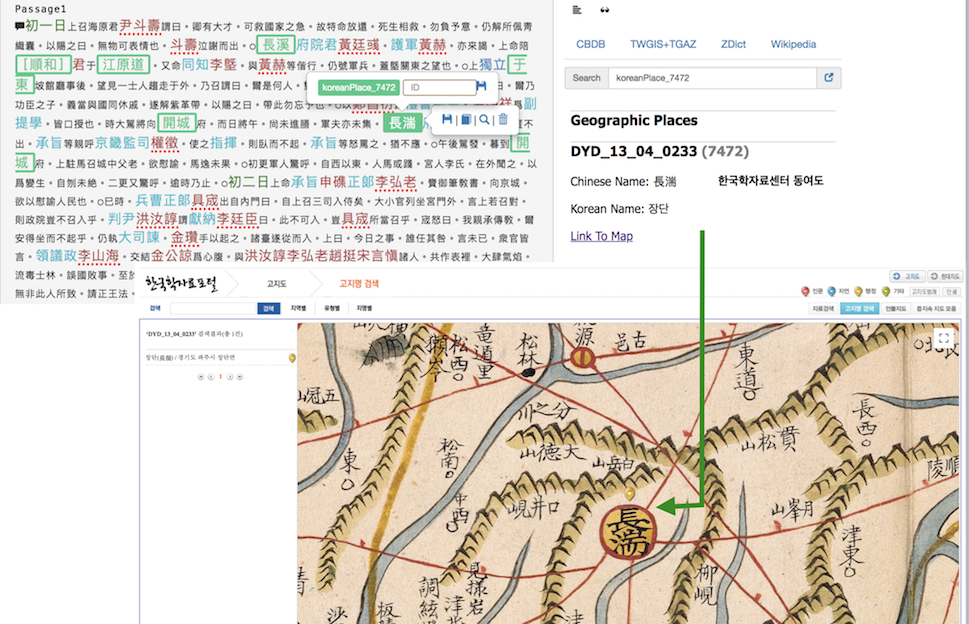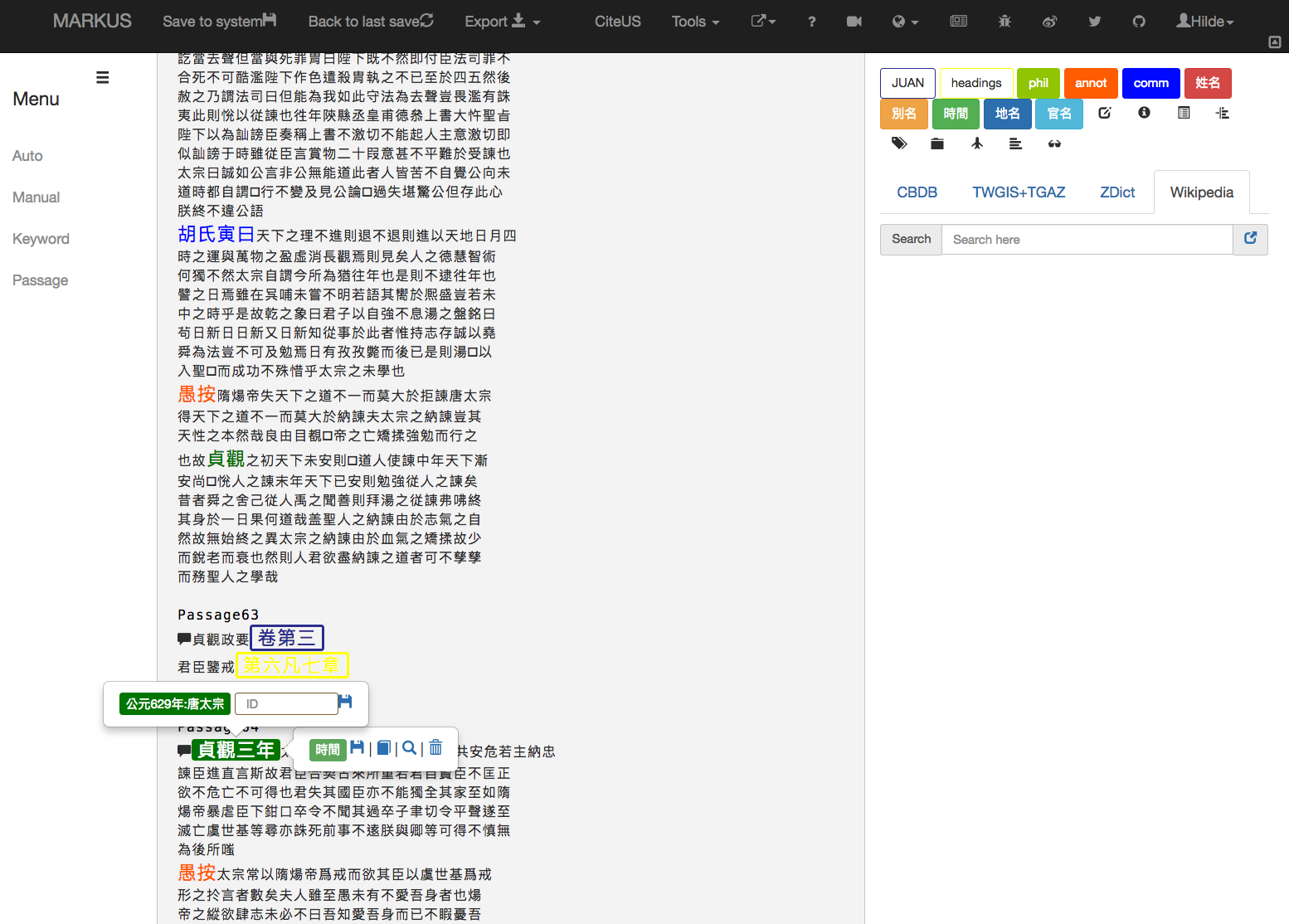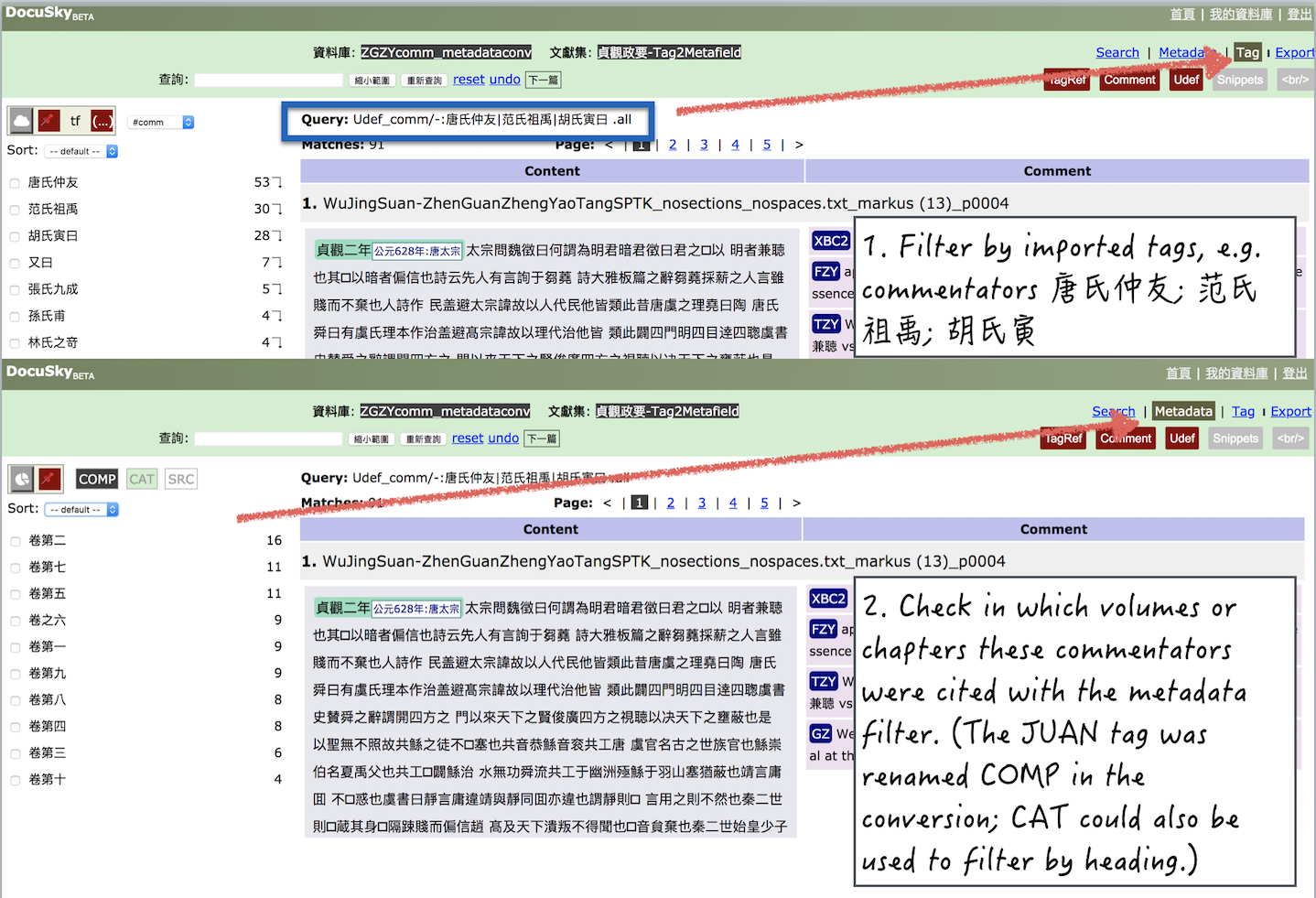We launched a new version of MARKUS on the occasion of the Council of East Asian Libraries and Association for Asian Studies 2019 meetings in Denver.
-
Automated markup in MARKUS can now handle Korean texts written in classical Chinese. The default entities include personal names, place names, official titles and posts, and book titles. We acknowledge the support of Kim Hyeon, Kim Baro and the Academy of Korean Studies and the assistance of Hu Jing, Mees Gelein and Brent Ho.
-
The selection of web references has been increased with
*the Encyclopedia of Korean Culture 韓國民族文化大百科事典 (for Korean book titles),
*Korean biographical databases from 韓國歷代人物綜合情報系統 and 韓國民族文化大百科事典 (the same person may be covered in different databases with each containing slightly different information),
*the Map of Dongyeo or 東輿圖 (for Korean historical place names)
*reference to official titles and posts in the veritable records (based on 朝鮮王朝實錄 and 朝鮮王朝實錄事典)
*buleku (Manchu dictionaries https://docs.buleku.org/sources.html) – with credit to Fresco Sam-Sin and Léon Rodenburg
 Figure 1. Linking tagged place names to the Map of Dongyeo or 東輿圖
Figure 1. Linking tagged place names to the Map of Dongyeo or 東輿圖
- We added new video clips on features that were added in the past year:
-How to use batch markup
-How to export to docusky
-How to add place name ids to map data in docugis
-How to use COMPARATIVUS for text comparison between any two files and for tagging instances of text reuse in MARKUS files
https://dh.chinese-empires.eu/markus/beta/video.html
We also added a link to the very helpful docusky manual compiled by Hu ChiRui et al. (which also includes a section on MARKUS—this edition has not yet been updated with functionality added over the past year)
-
The research forum features a few new blogposts on projects on local gazetteers and Tang-Song political history by Xiong Hueilan, Liu Jialong and Hilde De Weerdt https://dh.chinese-empires.eu/forum/category/8/research-blogs
-
In automated tagging we added place names from the DDBC Place Authority Database (法鼓佛教學院地名規範資料). This dataset includes lots of extra place names mentioned in Buddhist sources. With special thanks to Joey Hong 洪振洲.
-
Finally we want to draw your attention to the metadata conversion tool developed by Tu Hsieh-Chang. http://docusky.org.tw/DocuSky/docuTools/RecomposeXML/manageMetadataFieldsTool.html
This allows you to convert MARKUS tags to metadata or structural markup; in this way you can divide a single file into divisions. For example, in a file with several juan (volumes) and zhang (chapters) you can tag these divisions using keyword markup (see figure 2). After exporting the file to docusky from your MARKUS account you can select one or more tags (say JUAN and headings) to be converted to metadata. In the resulting docusky textual database, you will see that these tags can now be used as metadata categories (see figure 3). You can then, for example, filter and analyze other information you tagged by volume or chapter. The example below shows how this feature can be used to sort commentary and commentators by volume and chapter.
 Figure 2
Figure 2
 Figure 3
Figure 3
In the coming months we will continue to work on relational markup (establishing relationship between entities) and additional dictionaries. All suggestions and offers for collaborations welcome.
NOTE:
-
If you were using MARKUS before, please clean your browser cache—not doing so may result in the malfunction of the new version of MARKUS. On this problem see also our FAQ https://dh.chinese-empires.eu/markus/beta/faq.html
-
The Korean datasets may be slower to load—be patient, only hit the markup button once and wait for the scanning process to start. Hitting it twice may freeze your system as it will try to execute the command twice.